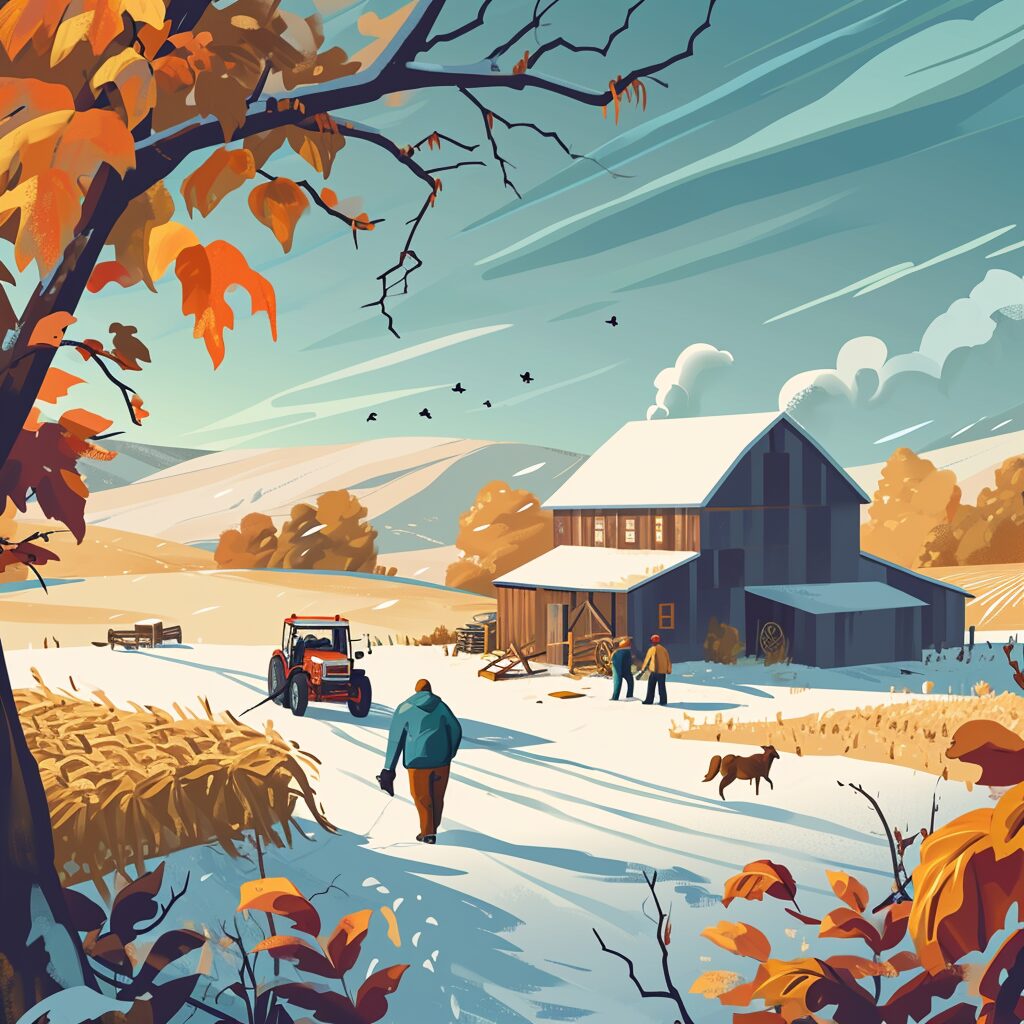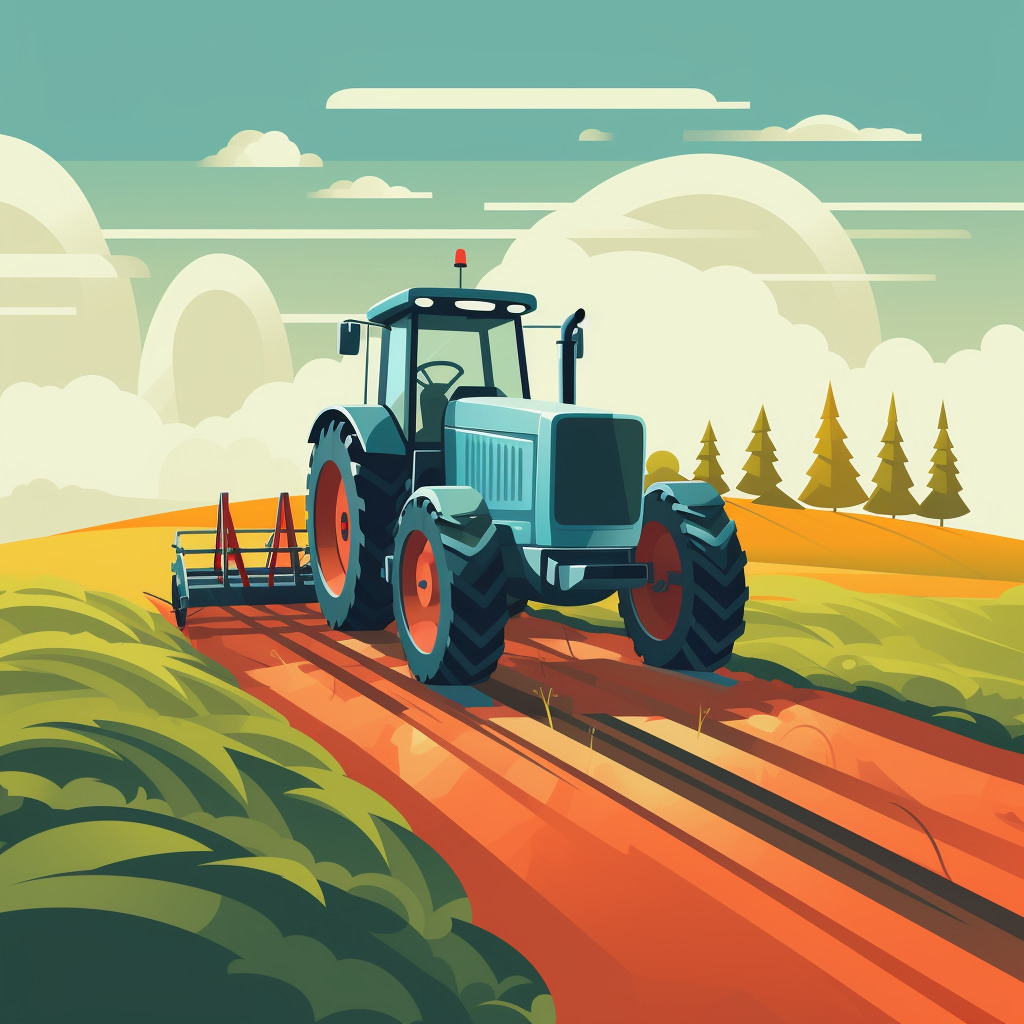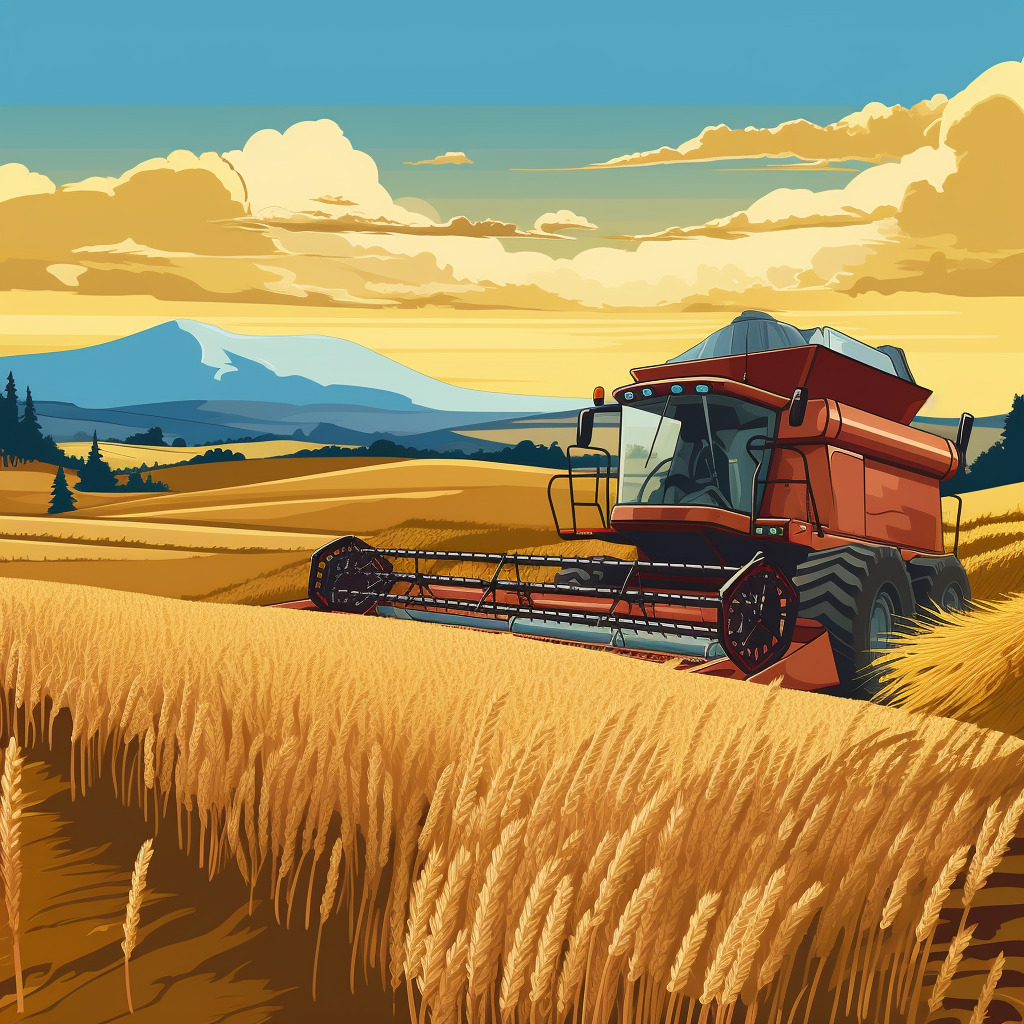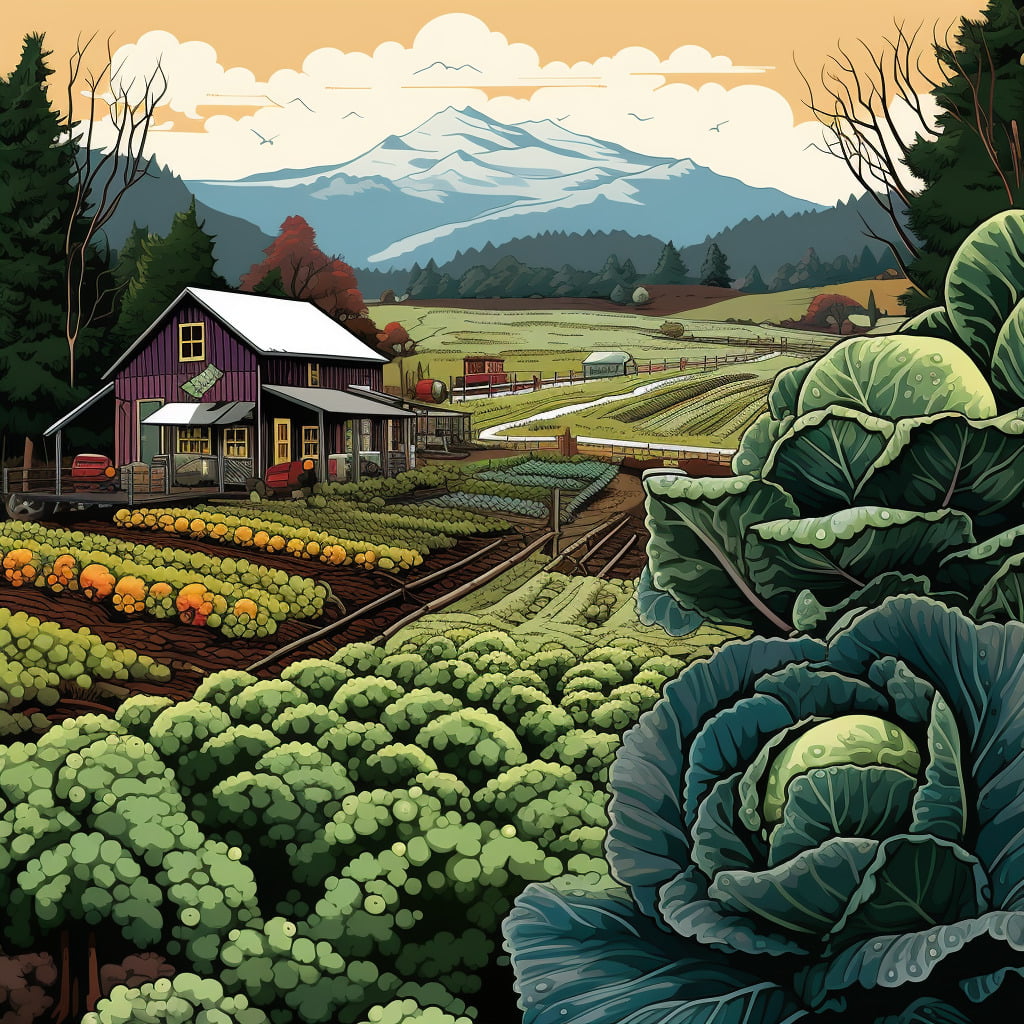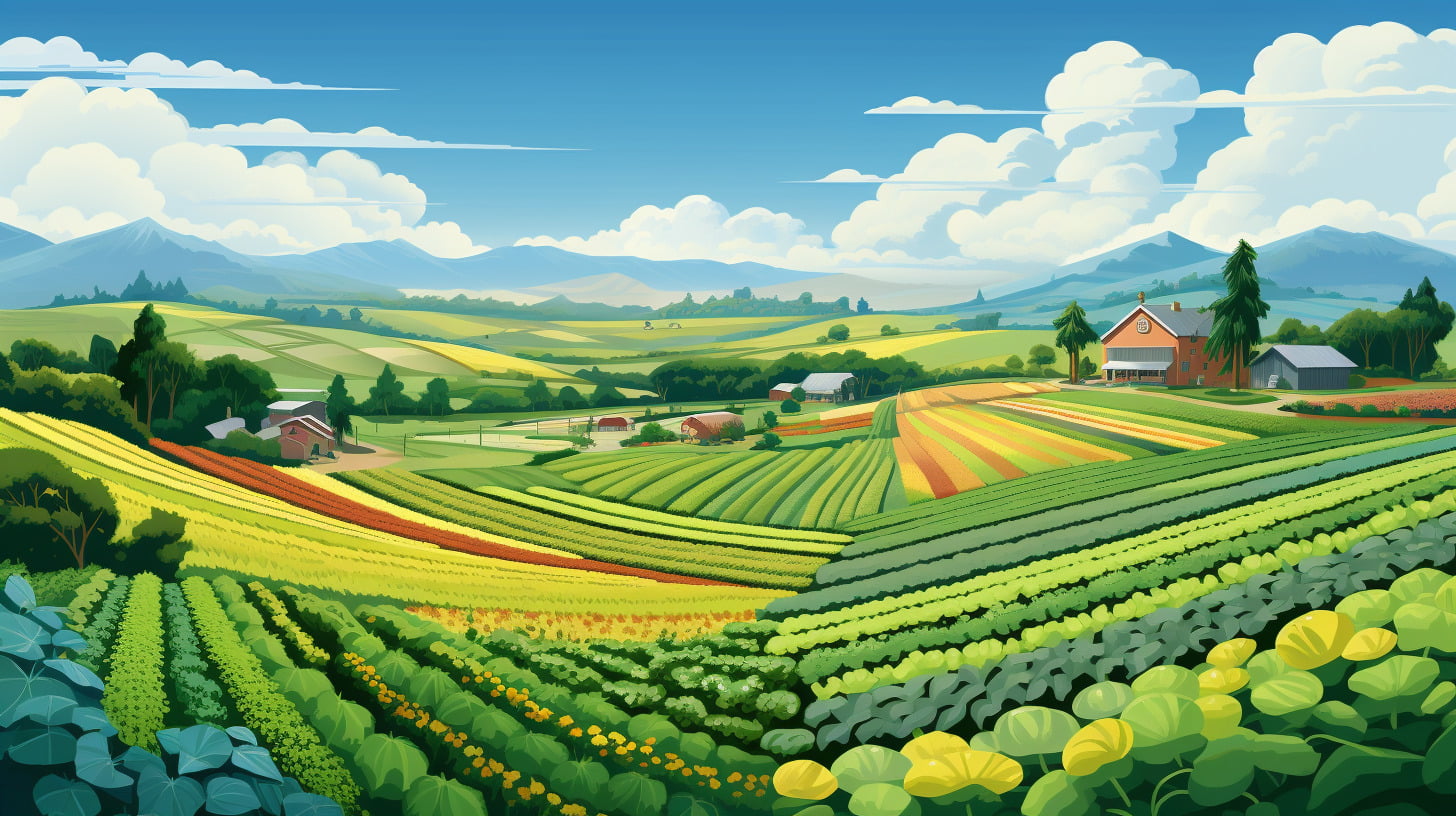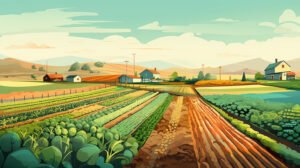Introduction
As the crisp air of autumn gives way to the chill of winter, farmers across Western Washington are reminded of the relentless challenge that the season brings. Known for its diverse agricultural landscape, from lush orchards to robust livestock farms, Western Washington is a region where farming is not just a livelihood but a way of life. However, with winter comes a unique set of challenges that can test even the most experienced farmer. The region is characterized by its wet, often unpredictable weather, with temperatures that can dip low enough to threaten crops and livestock alike.
In this blog post, we delve into the essential strategies for weatherproofing your farm against the winter conditions of Western Washington. Whether you’re tending to acres of crops or caring for a herd, the coming months demand preparation and foresight to ensure the survival and productivity of your farm. We’ll explore a range of topics, from structural reinforcements and livestock care to crop protection and sustainable energy solutions, each tailored to the unique climatic conditions of the region.
But why is weatherproofing so crucial? In simple terms, the longevity and success of your farming endeavors hinge on how well you prepare for and adapt to the winter season. Uninsulated buildings, unprotected crops, or inadequately cared-for livestock can lead to significant losses, both financially and in terms of your hard work. Conversely, a well-prepared farm can not only withstand the winter but also emerge stronger and more efficient in the spring.
This guide is designed to equip you with the knowledge and tools to effectively safeguard your farm against the cold and damp, ensuring that when winter does arrive, you and your farm are ready. From practical tips to innovative solutions, we aim to cover all that you need to know to make this winter a season of triumph rather than trial for your farm.
Understanding Western Washington’s Winter Climate
The key to effective weatherproofing lies in understanding the specific challenges posed by the winter climate in Western WA. This region, distinct in its climatic patterns, experiences a range of weather conditions that can significantly impact agricultural practices.
A. Characteristic Weather Patterns
1. Temperature Variations: Western Washington’s winter temperatures are generally moderate but can occasionally plummet, leading to frost and freezing conditions. These temperature dips, although not consistently extreme, are enough to damage sensitive crops and stress livestock.
2. High Precipitation Levels: The region is known for its high levels of rainfall during winter. This consistent moisture can be a double-edged sword; while it ensures adequate water supply, it also raises concerns like soil erosion, waterlogging, and flooding, which can be detrimental to both crops and farm infrastructure.
3. Wind and Storms: Winter storms, accompanied by strong winds, are not uncommon in this area. These can cause physical damage to structures and plants and contribute to a significant chill factor, affecting both humans and animals on the farm.
B. Impacts on Different Farm Types
1. Livestock Farms: The combination of cold and wet conditions can be particularly challenging for livestock health. Respiratory issues and increased susceptibility to diseases are common concerns. Adequate shelter, nutrition adjustments, and health monitoring become paramount.
2. Crop Farms: For crop farmers, the primary concerns are frost damage and excessive soil moisture. Certain crops may require additional protective measures such as mulching or the use of greenhouses. Managing drainage and preventing nutrient runoff also become critical tasks.
3. Orchards: Orchards face the risk of frost damage, which can affect bud and fruit development. Winter pruning and appropriate soil care are essential to safeguard these perennial crops.
C. Adapting to the Climate
Understanding these weather patterns and their implications allows farmers to strategize effectively. It involves a combination of preventive measures, like infrastructure reinforcement, and adaptive strategies, such as choosing the right crop varieties or livestock breeds suited to these conditions.
As we progress through this guide, we’ll explore specific strategies to combat each of these challenges, tailored to the diverse needs of WA state farms. From innovative farming techniques to tried-and-tested practices, the focus will be on practical, actionable solutions that can be implemented to protect your farm from the winter elements.
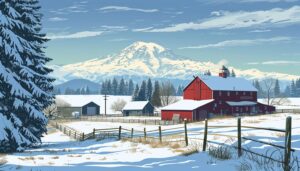
Structural Weatherproofing
The buildings and structures on your farm play a critical role in weatherproofing. Proper maintenance and reinforcement of these structures can make a significant difference in how your farm withstands the winter months.
A. Buildings and Barns
- Insulation and Sealing: Proper insulation is vital for maintaining temperature and reducing heating costs. Focus on insulating walls and installing weather stripping around doors and windows to prevent drafts. Additionally, sealing any cracks or gaps in the structure can prevent moisture intrusion, which is crucial in the damp conditions we face.
- Roof Maintenance and Snow Load: Regular inspection and maintenance of roofs are essential to prevent leaks and collapse under heavy snow or rain. Reinforce the structural integrity of roofs and clear gutters and drainage paths to prevent water accumulation.
- Windproofing: Strong winds can cause significant damage. Reinforce barn doors and windows and consider installing windbreaks or shelterbelts around your buildings to minimize wind impact.
B. Greenhouses and Crop Covers
- Materials and Structural Design: Choose durable materials for greenhouses, such as polycarbonate panels, which offer better insulation and resilience against snow and wind compared to glass. The structural design should facilitate snow shedding and withstand high winds.
- Temperature Control and Ventilation: Install thermostatically controlled heating systems to maintain optimal temperatures. Proper ventilation is crucial to prevent overheating and humidity build-up, which can lead to mold and mildew.
C. Storage and Utility Areas
- Water System Protection: Insulate pipes and install heat tapes to prevent freezing. Ensure that your water storage tanks are well-maintained and insulated against the cold.
- Safe Storage of Chemicals and Feed: Store farm chemicals and feed in a dry, well-ventilated area to prevent spoilage and degradation. Ensure that these storage areas are securely sealed to keep out moisture and pests.
D. Adaptations for Specific Farm Types
- Livestock Housing: In addition to general structural considerations, livestock housing may require specific adaptations such as heated water troughs, draft-free ventilation, and sufficient dry bedding to keep animals warm and healthy.
- Crop Storage and Processing Areas: Ensure that crop storage areas like root cellars or grain bins are moisture-free and well-ventilated. Consider adding additional insulation or climate control systems if storing sensitive products.
By focusing on these key areas of structural weatherproofing, you can significantly enhance your farm’s resilience to the winter weather. Each of these measures not only provides immediate benefits in terms of protection and efficiency but also contributes to the long-term sustainability and profitability of your farming operation.
Livestock Care During Winter
Caring for livestock during winter requires a proactive approach to ensure their health, comfort, and productivity. The cold, wet weather can pose significant risks to animals if not properly managed.
A. Housing and Bedding
- Shelter Requirements: Livestock shelters should be sturdy, well-insulated, and free from drafts, yet still ventilated to prevent moisture buildup. Ensure roofing is leak-proof to keep animals dry during heavy rainfalls.
- Bedding Management: Use dry, insulating materials like straw or wood shavings for bedding. Regularly replace bedding to keep it dry and clean, reducing the risk of diseases and providing warmth.
- Space and Comfort: Ensure that each animal has enough space to move freely without overcrowding, which can lead to stress and health issues. Consider the specific space requirements for different types of livestock.
B. Feeding and Hydration
- Nutritional Adjustments: In winter, animals often require more calories to maintain body heat. Increase feed rations accordingly, focusing on high-energy foods. Consult a livestock nutritionist for specific dietary recommendations.
- Water Access: Prevent water from freezing and ensure a continuous supply of fresh water. Heated water troughs or insulated water containers can be effective solutions.
- Special Care for Young and Vulnerable Animals: Pay extra attention to the nutritional and shelter needs of calves, lambs, and other young animals. Elderly or sick animals may also require additional care and monitoring.
C. Health Monitoring
- Regular Check-ups: Keep a closer eye on your livestock for signs of cold stress, respiratory problems, or frostbite, especially in extremities like ears and tails. Early detection and treatment of any health issues are crucial.
- Parasite Control: Winter can see a rise in certain parasites. Maintain a regular deworming and parasite control schedule to keep your livestock healthy.
- Emergency Preparedness: Have a plan in place for veterinary emergencies, including easy access to a veterinarian who can provide services during harsh weather conditions.
D. Exercise and Outdoor Access
- Outdoor Time: Whenever weather permits, allow livestock some time outside. This helps maintain their health and reduces stress. Ensure that outdoor areas are safe and free from hazards like ice or deep snow.
- Protective Measures: For breeds less tolerant to cold, consider additional protective measures like windbreaks in outdoor areas or even coats for individual animals, especially in the case of horses or young calves.
By implementing these guidelines for livestock care during winter, farmers can ensure the well-being of their animals. Each step, from optimized shelter and nutrition to vigilant health monitoring, plays a vital role in safeguarding livestock against the challenges of the winter season.
Protecting Crops and Orchards
Winter poses specific challenges to crops and orchards, including frost, excess moisture, and the risk of disease. Effective strategies must be employed to protect these vital components of the agricultural landscape.
A. Frost Protection
- Frost Cloths and Covers: Utilize frost cloths or plant covers for sensitive crops. These materials help to trap heat and reduce the impact of frost on plants.
- Windbreaks: Planting or constructing windbreaks can reduce wind speed and mitigate the effects of cold winds on crops and orchards. This can also help in reducing the drying effect of cold winds on soil and plants.
- Heating: In certain situations, using heaters in fields or orchards can be effective. This is more common in high-value crop areas where the cost can be justified.
B. Soil Management
- Erosion Control: Implement measures like cover cropping or mulching to prevent soil erosion during heavy rains. These practices also help in maintaining soil health and fertility.
- Drainage Improvement: Ensure proper drainage in fields to prevent waterlogging. This may involve installing drainage systems or creating natural drainage paths.
- Nutrient Management: Apply organic matter like compost to improve soil structure and nutrient content, helping plants withstand winter stress.
C. Winter Pruning
- Orchard Trees: Late winter is often the best time for pruning fruit trees. Pruning helps in removing dead or diseased wood and allows for better light penetration and air circulation, which is vital for tree health.
- Technique and Timing: Employ proper pruning techniques and timings for different tree types to ensure healthy growth in spring. This may vary based on the type of orchard and local climate conditions.
D. Water Management
- Rainwater Harvesting: Implement systems to collect and store rainwater. This not only helps in managing excess water but also provides a resource for irrigation during drier periods.
- Irrigation Adjustments: Modify irrigation schedules to account for decreased evapotranspiration rates in winter. Over-irrigation can lead to waterlogging and increase the likelihood of root diseases.
E. Disease and Pest Control
- Monitoring and Management: Regularly inspect crops for signs of disease or pest infestation. Winter can bring specific challenges, such as fungal diseases due to wet conditions.
- Integrated Pest Management (IPM): Employ IPM strategies, combining biological, cultural, and chemical methods to manage pests and diseases effectively and sustainably.
Water Management
Effective water management is crucial for farms, especially during winter when the risks of freezing and flooding are heightened. Managing water resources wisely can prevent damage to infrastructure and ensure adequate water supply for livestock and crops.
A. Preventing Freezing in Water Systems
- Insulation of Pipes and Taps: Insulate water pipes, especially those exposed to the outside, to prevent them from freezing. Using foam insulation sleeves or heat tape can be effective.
- Heated Water Troughs for Livestock: Install heated water troughs or use immersion heaters in existing troughs to keep water from freezing, ensuring a constant supply of drinking water for animals.
- Regular Checks and Maintenance: Routinely check your water systems for leaks or blockages. Repair any issues promptly to prevent problems from escalating during cold spells.
B. Rainwater Harvesting and Drainage
- Rainwater Collection Systems: Implement systems to collect and store rainwater from roofs and other surfaces. This can provide an additional water resource and help manage runoff.
- Effective Drainage Planning: Ensure your farm has proper drainage to prevent waterlogging and flooding. This might include installing French drains, ditches, or culverts.
- Surface Water Management: Manage the flow of surface water across your farm to prevent erosion and nutrient loss. Consider using swales, contour plowing, or terracing.
C. Flood Prevention and Mitigation
- Floodplain Awareness: Understand if parts of your farm are in a floodplain and plan accordingly. Elevating critical infrastructure and creating barriers can be part of this strategy.
- Emergency Response Plan: Develop an emergency plan for flooding, including routes for moving livestock to higher ground and protecting essential equipment and feed.
- Collaboration with Local Authorities and Neighbors: Stay informed about local water management plans and collaborate with nearby farms and authorities for comprehensive flood response strategies.
D. Irrigation Adjustments
- Winter Irrigation Needs: Recognize that irrigation needs are reduced in winter. Adjust your irrigation schedules based on weather forecasts and soil moisture levels.
- Protecting Irrigation Equipment: Winterize irrigation systems to prevent damage. This includes draining pipes, shutting off water supply to outdoor taps, and storing portable equipment in a dry place.
- Planning for Spring: Use the winter period to plan and maintain your irrigation systems for the upcoming growing season, ensuring everything is in optimal condition.
Equipment Maintenance
Proper maintenance and preparation of farm equipment are vital for winter resilience. The cold, wet conditions can be harsh on machinery, and readiness is key to preventing downtime and costly repairs.
A. Winterizing Machinery and Vehicles
- Engine and Battery Care: Ensure that all vehicles and machinery are fitted with winter-grade oil. Check and replace batteries if necessary, as cold weather can reduce their efficiency.
- Antifreeze Levels: Verify that antifreeze levels are adequate in all machinery and vehicles to prevent freezing.
- Hydraulic and Fuel Systems: Drain any water from hydraulic systems to prevent freezing and damage. Use fuel additives to prevent diesel fuel from gelling in low temperatures.
B. Safe Storage of Equipment and Tools
- Dry, Protected Storage: Store equipment and tools in a dry, covered area to protect them from the elements. This prevents rust and corrosion caused by moisture.
- Organized and Accessible: Keep your equipment organized and easily accessible. This saves time and effort when machinery is needed, especially during adverse weather conditions.
- Tool and Equipment Checks: Regularly inspect tools and equipment for wear and tear. Fixing minor issues before they escalate can save time and money.
C. Emergency Preparedness
- Generators and Heaters: Ensure that generators are in good working order and that you have a sufficient supply of fuel. Portable heaters can be critical in workshops and barns for both work efficiency and preventing equipment from freezing.
- Snow Removal Equipment: Keep snow removal equipment like plows and blowers ready and in good condition. This is essential for maintaining access around the farm.
- Backup Plans for Power Outages: Have a plan in place for power outages, including backup lighting and alternative power sources for essential farm operations.
D. Seasonal Equipment Transition
- Seasonal Maintenance Routines: Transition equipment from summer to winter use. This includes fitting tractors with snow tires or chains and preparing snow removal equipment.
- Lubrication and Cleaning: Lubricate moving parts to prevent them from seizing in the cold and clean equipment to remove any debris that could cause damage or inefficiency.
- Record Keeping: Keep detailed records of all maintenance activities. This helps in tracking the condition of your equipment and planning future maintenance activities.
Proper equipment maintenance and preparedness are crucial for smooth farm operation during winter. Taking proactive steps to ensure that all machinery and tools are in prime condition not only minimizes the risk of breakdowns but also enhances safety and efficiency on the farm during the challenging winter months.
Sustainable Energy Solutions
Adopting sustainable energy solutions can significantly benefit farms, especially during the winter months. These practices not only reduce the farm’s carbon footprint but also enhance energy efficiency and can lead to cost savings in the long run.
A. Utilizing Solar Power for Heating and Lighting
- Solar Panels: Install solar panels to harness solar energy. While winter days are shorter, modern solar panels are efficient enough to capture the available sunlight, providing a renewable source of energy for farm operations.
- Solar Water Heaters: Use solar water heaters for livestock barns and greenhouses. These can be more efficient and sustainable compared to traditional water heating methods.
- Solar Lighting: Implement solar-powered lighting systems, particularly in outdoor areas. This reduces dependency on the electrical grid and provides reliable lighting, even during power outages.
B. Wind Energy Opportunities
- Wind Turbines: Consider installing small wind turbines if your farm is in an area with sufficient wind resources. Wind power can supplement your energy needs, particularly during winter when wind levels can be higher.
- Integrating with Existing Systems: Combine wind energy systems with existing power sources for a more robust and reliable energy supply.
C. Insulation and Energy Conservation
- Building Insulation: Enhance the insulation in farm buildings. This reduces the need for heating, thereby saving energy and reducing costs.
- Energy-Efficient Appliances: Invest in energy-efficient appliances and systems, especially for heating and ventilation. Look for ENERGY STAR-rated products that offer better efficiency.
- Smart Thermostats: Use smart thermostats in greenhouses and indoor facilities to regulate temperature more effectively and conserve energy.
D. Biomass for Heating
- Biomass Boilers: Utilize biomass boilers, which can burn wood chips, pellets, or agricultural waste to produce heat. This is particularly relevant for farms with access to biomass materials.
- Combined Heat and Power (CHP): Implement CHP systems that use biomass to generate both heat and electricity, enhancing the overall efficiency of energy use on the farm.
E. Sustainable Farm Practices
- Energy Audits: Conduct energy audits to identify areas where energy efficiency can be improved. This helps in prioritizing investments in sustainable solutions.
- Conservation Techniques: Adopt conservation techniques such as reducing unnecessary energy use, optimizing equipment use schedules, and maintaining machinery to operate at peak efficiency.
- Community Renewable Energy Projects: Participate in community-based renewable energy projects, which can provide cost-effective and sustainable energy solutions while fostering community engagement.
By integrating these sustainable energy solutions, farms in can navigate the challenges of winter more effectively, reducing energy costs and contributing to environmental sustainability. These solutions not only address immediate energy needs but also position the farm for long-term sustainability and resilience.
Emergency Preparedness and Weather Monitoring
Winter can bring unpredictable weather, making emergency preparedness and weather monitoring essential for farm management. Being well-prepared can help minimize damage and ensure the safety of both people and animals on the farm.
A. Creating a Farm Emergency Plan
- Identify Risks: Assess your farm for potential winter hazards such as flooding, heavy snowfall, and power outages. Understanding these risks is the first step in creating an effective emergency plan.
- Develop Response Strategies: Outline specific actions to be taken in response to different emergencies, including evacuation routes for livestock, locations of emergency supplies, and contact information for local emergency services.
- Communication Plan: Establish a clear communication plan to ensure that all farm workers and family members are informed and know their roles in an emergency.
B. Utilizing Weather Forecasting Tools and Apps
- Reliable Forecasting Sources: Use trusted weather forecasting tools and apps to stay informed about upcoming weather conditions. This can help in making timely decisions to protect crops, livestock, and infrastructure.
- Real-Time Alerts: Subscribe to real-time weather alerts for immediate updates on severe weather conditions. This can be crucial for taking swift actions to mitigate risks.
C. Community Resources and Support Networks
- Local Agricultural Extensions: Engage with local agricultural extension services for expert advice and support. They can provide valuable resources and information specific to farming in Western Washington.
- Networking with Other Farmers: Build a network with other farmers in the region. Sharing experiences and strategies can be invaluable, especially in dealing with regional weather challenges.
- Emergency Services Coordination: Coordinate with local emergency services and understand their capabilities and limitations. Knowing how to effectively work with these services can be critical during a crisis.
D. Farm Infrastructure and Supplies
- Backup Power Solutions: Ensure you have reliable backup power solutions, such as generators, in case of power outages. Regularly test and maintain these systems.
- Emergency Supplies: Stock up on essential supplies including food, water, medication for livestock, and first-aid kits. Ensure that these supplies are easily accessible.
- Building and Equipment Checks: Regularly inspect and maintain buildings and equipment to ensure they can withstand severe weather conditions.
E. Insurance and Documentation
- Review Insurance Coverage: Regularly review your insurance policies to ensure they cover winter-related damages. Understand what is and isn’t covered under your current plan.
- Document Assets: Keep an updated record of all your farm assets, including livestock, equipment, and buildings. This documentation is crucial for insurance claims in case of damage.
By focusing on emergency preparedness and weather monitoring, you can significantly reduce the impact of winter emergencies. This proactive approach ensures that the farm, its assets, and its inhabitants are safeguarded against the unpredictable nature of winter weather.
Financial and Insurance Considerations
Navigating the financial aspects of winter weatherproofing and dealing with the potential impacts on your farm’s finances are crucial. Understanding and managing these factors can help ensure the economic stability and sustainability of your farm.
A. Cost-Effective Weatherproofing Investments
- Prioritizing Investments: Assess your farm to identify the most vulnerable areas and invest in weatherproofing measures that offer the highest return on investment. This could include improving insulation, upgrading to energy-efficient systems, or enhancing water management.
- Long-Term Savings: Consider the long-term savings of weatherproofing investments. For example, energy-efficient upgrades may have upfront costs but can lead to significant savings in utility bills over time.
- Grants and Funding Opportunities: Explore grants and funding opportunities available for farmers. Many government and private programs offer financial assistance for sustainability projects and disaster preparedness.
B. Insurance Options for Weather-Related Farm Damage
- Reviewing Insurance Policies: Regularly review your farm insurance policies to ensure they cover key risks associated with winter weather, such as crop damage, livestock losses, and property damage.
- Understanding Coverage Details: Pay close attention to the details of your insurance coverage, including deductibles, exclusions, and claim processes. Ensure that your coverage matches the specific risks of your region.
- Specialized Insurance Products: Consider specialized insurance products tailored to the needs of farmers, such as crop insurance, livestock insurance, and business interruption insurance.
C. Financial Planning and Management
- Emergency Funds: Establish an emergency fund to cover unexpected expenses related to winter damage. This can provide financial cushioning and reduce stress during challenging times.
- Budgeting for Winter Expenses: Include winter weatherproofing and emergency response costs in your annual budget. Planning for these expenses in advance can help avoid financial strain.
- Diversification of Income: Explore ways to diversify your farm income to mitigate the financial impact of a bad winter. This could include adding new revenue streams, such as agritourism or value-added products.
D. Record Keeping and Documentation
- Maintaining Detailed Records: Keep detailed records of all weatherproofing measures, repairs, and maintenance activities. This documentation is important for insurance claims and financial planning.
- Tracking Expenses and Savings: Monitor and record the expenses and savings associated with weatherproofing efforts. This helps in evaluating the effectiveness of your investments and planning future actions.
Conclusion
As we wrap up our comprehensive guide to weatherproofing your farm for the winter months, it’s important to revisit the key strategies we’ve discussed. From structural fortifications and livestock care to crop protection and sustainable energy solutions, each element plays a vital role in preparing your farm for the challenges of winter. Remember, the goal is not just to endure the winter but to emerge from it with a farm that is strong, productive, and resilient.
The importance of early and thorough preparation cannot be overstated. By taking proactive steps now, you can mitigate the risks posed by the cold, wet conditions typical of Pacific Northwest winters. This involves not only physical preparations but also financial planning and emergency readiness. The efforts you put in today will pay dividends in the form of a farm that thrives year-round, regardless of the weather.
We encourage you to start your winter preparations early. Assess your farm’s specific needs, implement the strategies discussed, and continuously monitor and adapt to changing conditions. The dynamic nature of farming means that what works one year may need tweaking the next. Stay informed, stay flexible, and stay connected with the farming community for shared insights and support.
References and Additional Resources
Websites:
- Washington State University Extension: Offers resources on agricultural practices, crop and livestock management specific to Washington State. – https://extension.wsu.edu/
- National Weather Service – Seattle: Provides local weather forecasts and alerts, crucial for winter planning.- https://www.weather.gov/sew/
- USDA Natural Resources Conservation Service: Offers information on soil, water management, and conservation practices.- https://www.nrcs.usda.gov/
- Washington State Department of Agriculture: A resource for state-specific agricultural regulations, grants, and farming news. – https://agr.wa.gov/
- Farmers.gov: Managed by the USDA, this site provides comprehensive resources on farm management, disaster assistance, and conservation programs. – https://www.farmers.gov/
Books:
- “The Winter Harvest Handbook” by Eliot Coleman: This book offers extensive insights into year-round vegetable production, with a focus on cold-weather strategies.
- “” by Heather Smith Thomas: A comprehensive guide covering the care, management, and health of cattle, useful for winter care strategies.
- “The Farmer’s Office: Tools, Tips and Templates to Successfully Manage a Growing Farm Business” by Julia Shanks: Useful for financial planning and management, particularly relevant for preparing and recovering from winter seasons.
- “The New Organic Grower, 3rd Edition” by Eliot Coleman: Provides sustainable farming practices, with insights into crop rotation, composting, and efficient farm design that can be adapted for winter.
- “Holistic Management: A Commonsense Revolution to Restore Our Environment” by Allan Savory and Jody Butterfield: Offers insights into managing land sustainably, which is crucial for adapting to and mitigating the effects of extreme weather.
